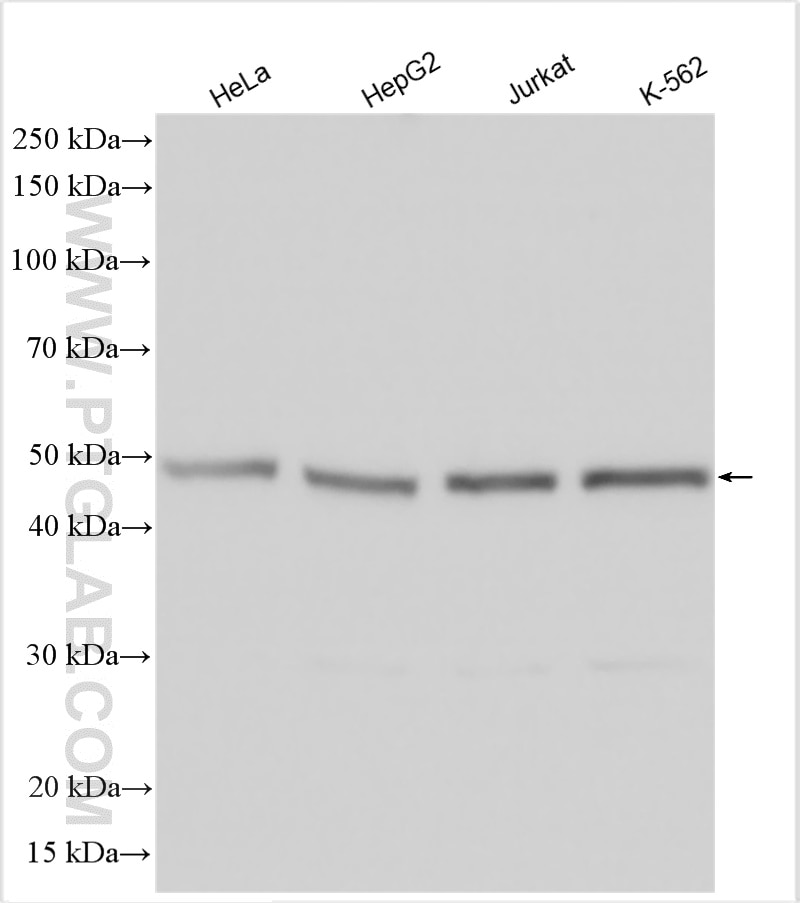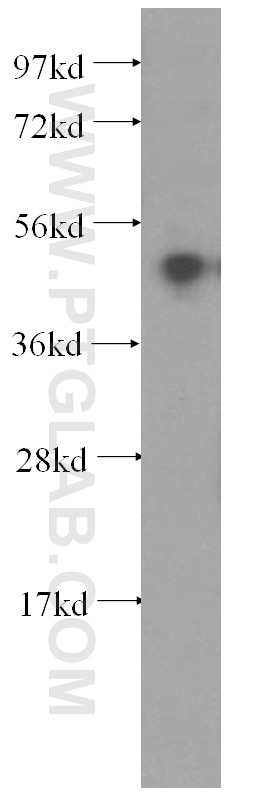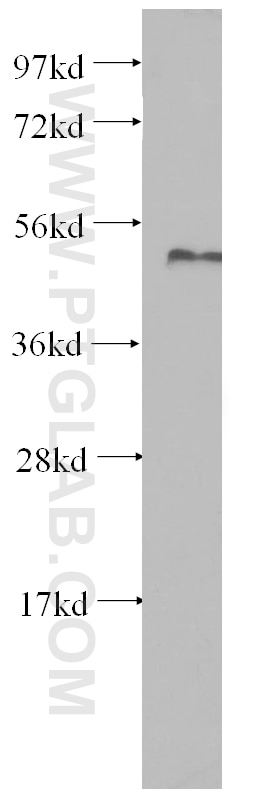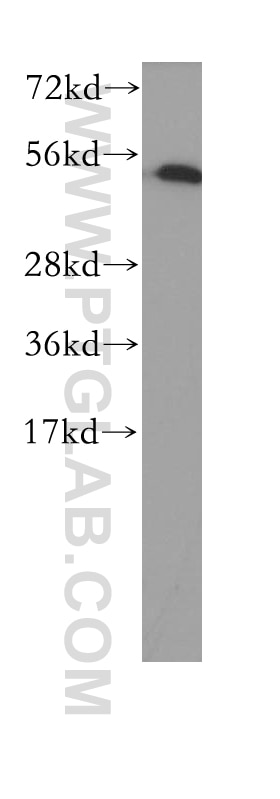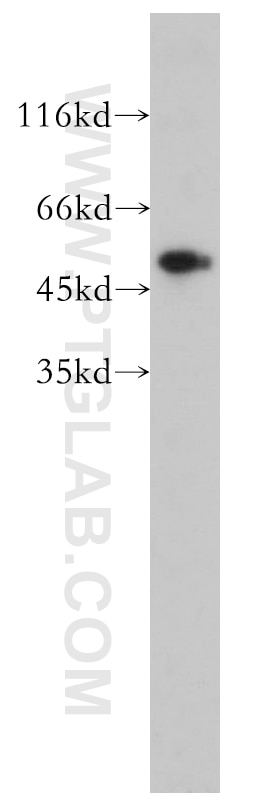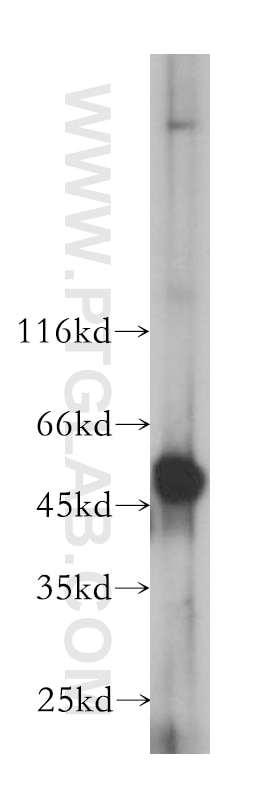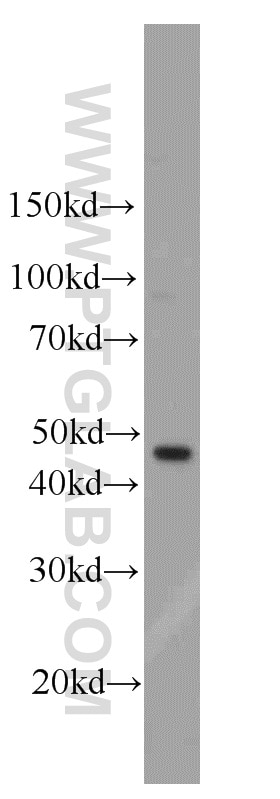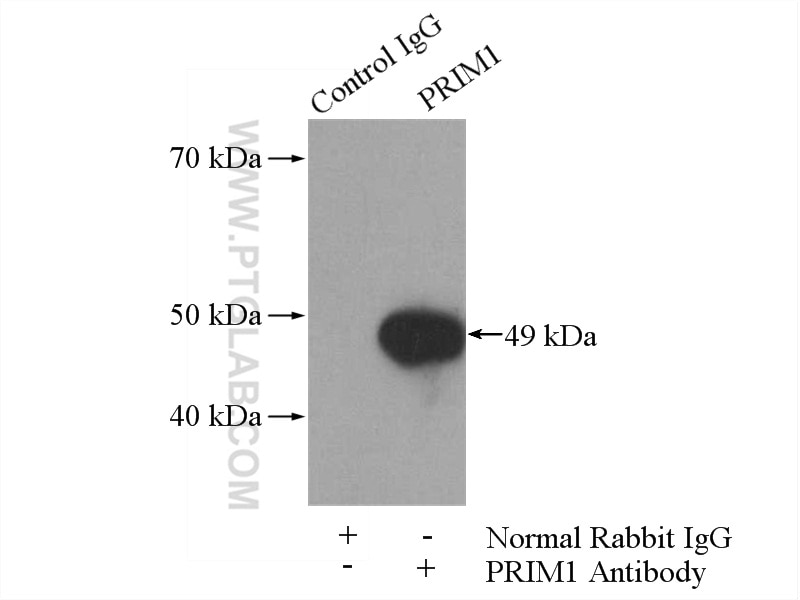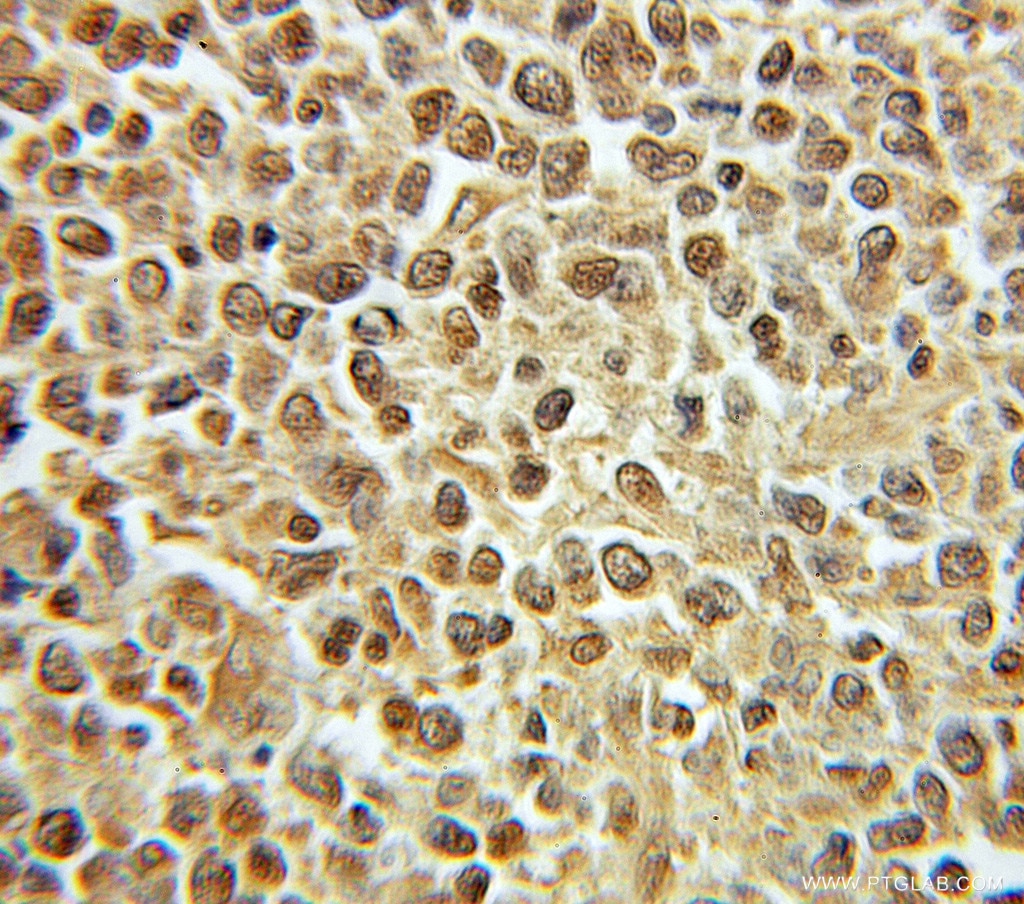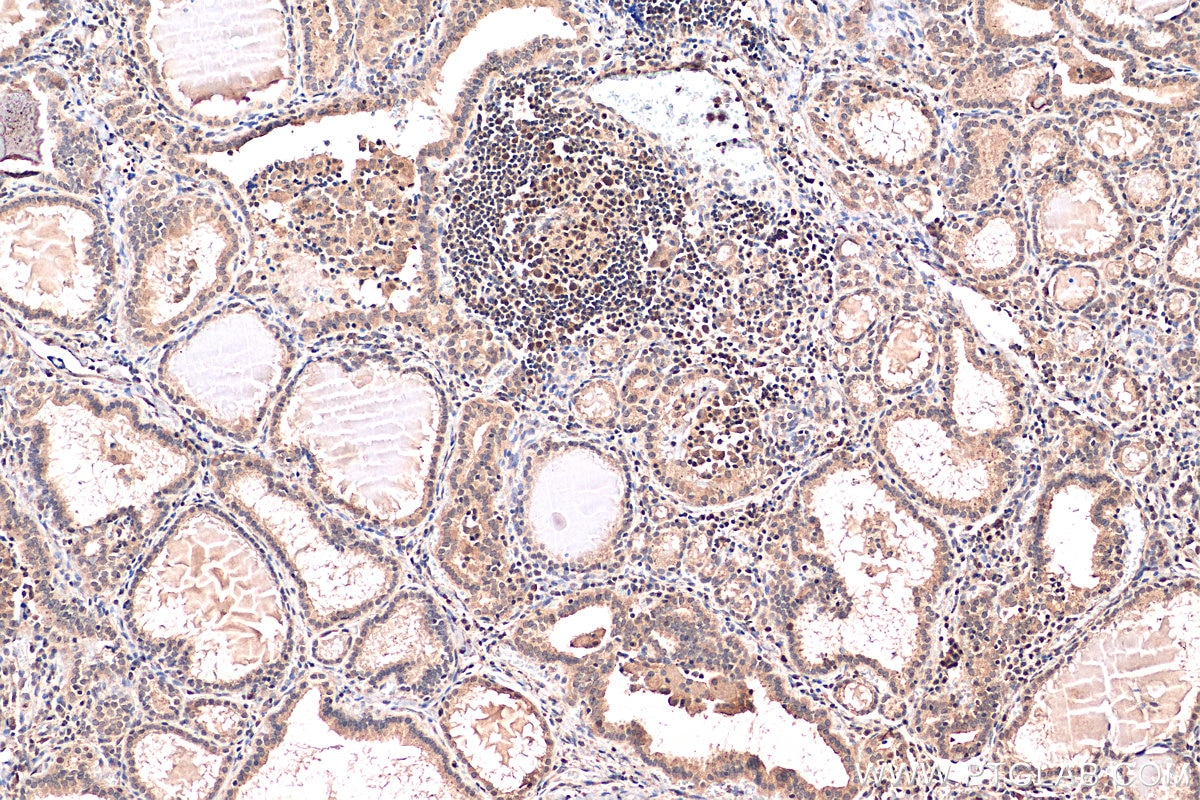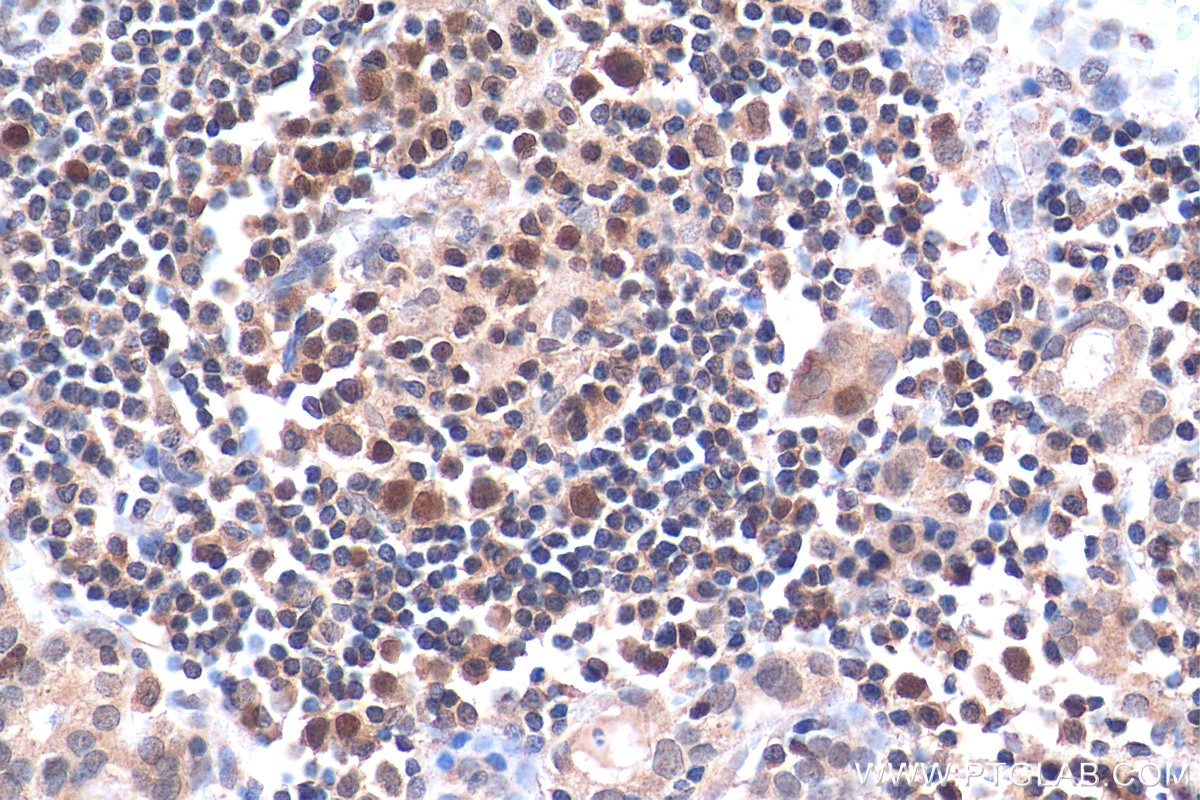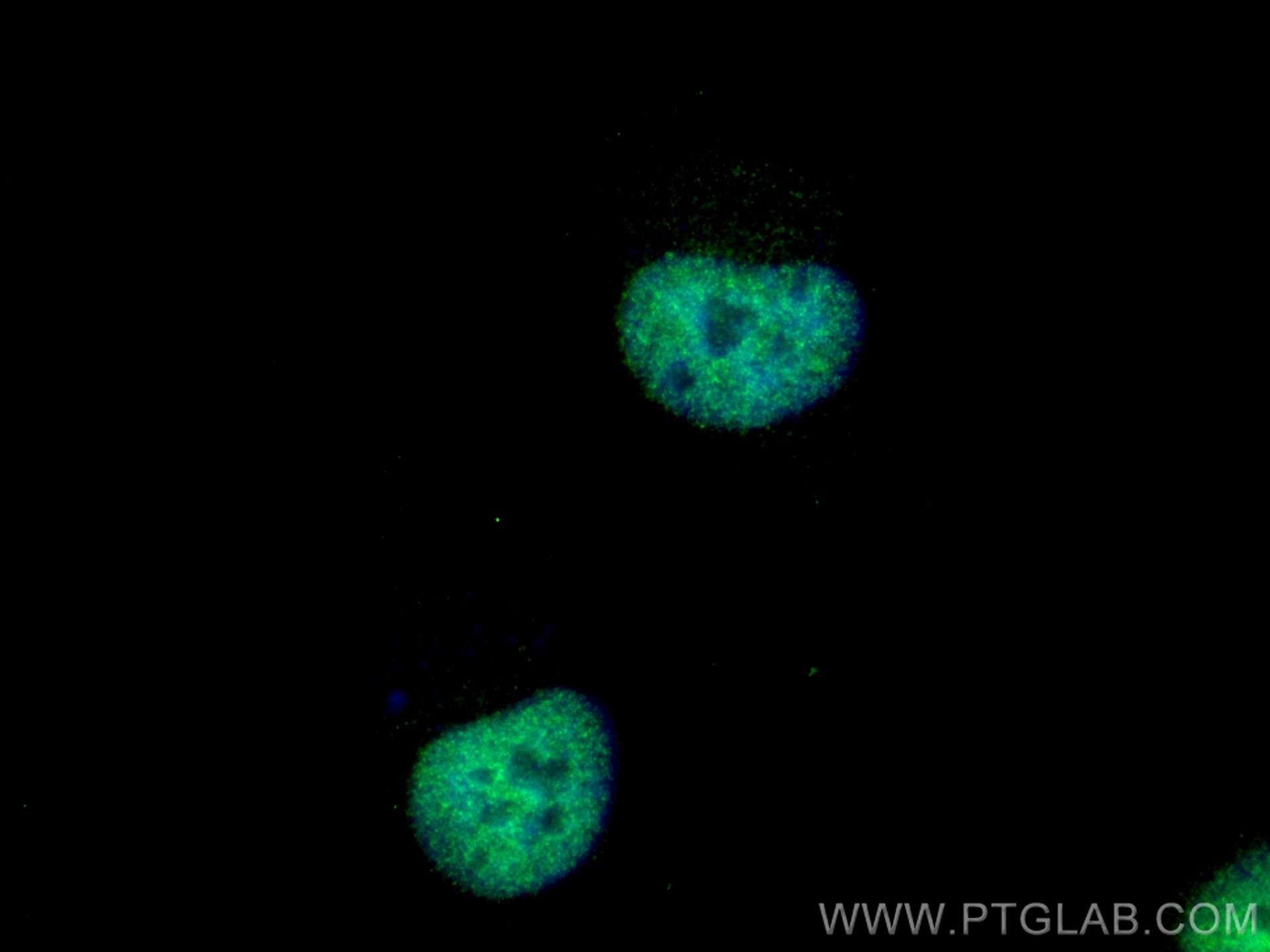Anticorps Polyclonal de lapin anti-PRIM1
PRIM1 Polyclonal Antibody for WB, IHC, IF/ICC, IP, ELISA
Hôte / Isotype
Lapin / IgG
Réactivité testée
Humain, rat, souris
Applications
WB, IHC, IF/ICC, IP, ELISA
Conjugaison
Non conjugué
N° de cat : 10773-1-AP
Synonymes
Galerie de données de validation
Applications testées
| Résultats positifs en WB | cellules HeLa, cellules HepG2, cellules Jurkat, cellules K-562, cellules Sp2/0 |
| Résultats positifs en IP | cellules HeLa |
| Résultats positifs en IHC | tissu de lymphome humain, tissu de cancer de la thyroïde humain il est suggéré de démasquer l'antigène avec un tampon de TE buffer pH 9.0; (*) À défaut, 'le démasquage de l'antigène peut être 'effectué avec un tampon citrate pH 6,0. |
| Résultats positifs en IF/ICC | cellules HeLa, |
Dilution recommandée
| Application | Dilution |
|---|---|
| Western Blot (WB) | WB : 1:500-1:3000 |
| Immunoprécipitation (IP) | IP : 0.5-4.0 ug for 1.0-3.0 mg of total protein lysate |
| Immunohistochimie (IHC) | IHC : 1:20-1:200 |
| Immunofluorescence (IF)/ICC | IF/ICC : 1:50-1:500 |
| It is recommended that this reagent should be titrated in each testing system to obtain optimal results. | |
| Sample-dependent, check data in validation data gallery | |
Applications publiées
| WB | See 8 publications below |
| IHC | See 2 publications below |
Informations sur le produit
10773-1-AP cible PRIM1 dans les applications de WB, IHC, IF/ICC, IP, ELISA et montre une réactivité avec des échantillons Humain, rat, souris
| Réactivité | Humain, rat, souris |
| Réactivité citée | Humain, souris |
| Hôte / Isotype | Lapin / IgG |
| Clonalité | Polyclonal |
| Type | Anticorps |
| Immunogène | PRIM1 Protéine recombinante Ag1124 |
| Nom complet | primase, DNA, polypeptide 1 (49kDa) |
| Masse moléculaire calculée | 50 kDa |
| Poids moléculaire observé | 50 kDa |
| Numéro d’acquisition GenBank | BC005266 |
| Symbole du gène | PRIM1 |
| Identification du gène (NCBI) | 5557 |
| Conjugaison | Non conjugué |
| Forme | Liquide |
| Méthode de purification | Purification par affinité contre l'antigène |
| Tampon de stockage | PBS with 0.02% sodium azide and 50% glycerol |
| Conditions de stockage | Stocker à -20°C. Stable pendant un an après l'expédition. L'aliquotage n'est pas nécessaire pour le stockage à -20oC Les 20ul contiennent 0,1% de BSA. |
Informations générales
DNA replication in human cells is initiated by a complex apparatus containing a DNA polymerase-alpha/primase complex. Primase synthesizes oligoribonucleotides that serve as primers for the initiation of DNA synthesis. It plays a role in both the initiation of DNA replication and the synthesis of Okazaki fragments for lagging strand synthesis. PRIM1 is a subnuit of this complex.
Protocole
| Product Specific Protocols | |
|---|---|
| WB protocol for PRIM1 antibody 10773-1-AP | Download protocol |
| IHC protocol for PRIM1 antibody 10773-1-AP | Download protocol |
| IF protocol for PRIM1 antibody 10773-1-AP | Download protocol |
| IP protocol for PRIM1 antibody 10773-1-AP | Download protocol |
| Standard Protocols | |
|---|---|
| Click here to view our Standard Protocols |
Publications
| Species | Application | Title |
|---|---|---|
Nat Cell Biol 53BP1-shieldin-dependent DSB processing in BRCA1-deficient cells requires CST-Polα-primase fill-in synthesis. | ||
Nucleic Acids Res CST does not evict elongating telomerase but prevents initiation by ssDNA binding. | ||
Cell Rep A Key Role for the Ubiquitin Ligase UBR4 in Myofiber Hypertrophy in Drosophila and Mice. | ||
DNA Repair (Amst) Expression of BRCA1, BRCA2, RAD51, and other DSB repair factors is regulated by CRL4WDR70. | ||
PLoS One Optimization of the chicken chorioallantoic membrane assay as reliable in vivo model for the analysis of osteosarcoma. | ||
